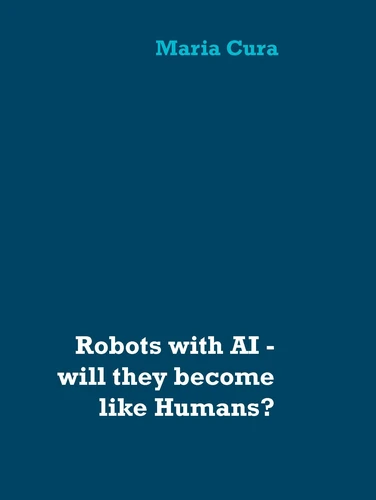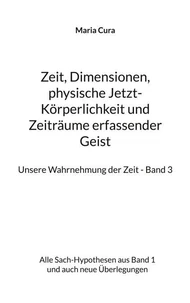Robots with AI - will they become like Humans?. Three worlds of different dimensions: calculating, physical bodies, imagination with feelings
Par :Formats :
Disponible dans votre compte client Decitre ou Furet du Nord dès validation de votre commande. Le format ePub protégé est :
- Compatible avec une lecture sur My Vivlio (smartphone, tablette, ordinateur)
- Compatible avec une lecture sur liseuses Vivlio
- Pour les liseuses autres que Vivlio, vous devez utiliser le logiciel Adobe Digital Edition. Non compatible avec la lecture sur les liseuses Kindle, Remarkable et Sony
- Non compatible avec un achat hors France métropolitaine
 , qui est-ce ?
, qui est-ce ?Notre partenaire de plateforme de lecture numérique où vous retrouverez l'ensemble de vos ebooks gratuitement
Pour en savoir plus sur nos ebooks, consultez notre aide en ligne ici
- Nombre de pages103
- FormatePub
- ISBN978-3-7392-0204-4
- EAN9783739202044
- Date de parution16/07/2019
- Protection num.Adobe DRM
- Taille168 Ko
- Infos supplémentairesepub
- ÉditeurBooks on Demand
Résumé
We know at least three different worlds. These worlds differ in the number of dimensions they are moving in.
There is the 1-dimensional world of calculating, of mathematics. It always uses and combines numbers, which all can be symbolized by a line of a certain length.
Then there is our 3-dimensional physical world of bodies and energies - it exists on the timeline always only in one moment, in the moment, which we call "now".
But in our mind the world is existing at least 4-dimensional.
That means, we not only see and realize the "now-moment" in which our body is existing, we can remember past times and we can imagine future or fantastic times. And our feelings are connected with our remembering or with planning and hoping for a imagined future. So our feeling needs the 4-dimensional mind. A calculating robot is constructed with 3-dimensional materials, and it is steering 3-dimensional materials.
Will that robot be it able to see the world like a living mind does see the world? The first spontaneous answer may be: yes. But is it really so? Or is there a fundamental difference? This is the question the book deals about.
That means, we not only see and realize the "now-moment" in which our body is existing, we can remember past times and we can imagine future or fantastic times. And our feelings are connected with our remembering or with planning and hoping for a imagined future. So our feeling needs the 4-dimensional mind. A calculating robot is constructed with 3-dimensional materials, and it is steering 3-dimensional materials.
Will that robot be it able to see the world like a living mind does see the world? The first spontaneous answer may be: yes. But is it really so? Or is there a fundamental difference? This is the question the book deals about.
We know at least three different worlds. These worlds differ in the number of dimensions they are moving in.
There is the 1-dimensional world of calculating, of mathematics. It always uses and combines numbers, which all can be symbolized by a line of a certain length.
Then there is our 3-dimensional physical world of bodies and energies - it exists on the timeline always only in one moment, in the moment, which we call "now".
But in our mind the world is existing at least 4-dimensional.
That means, we not only see and realize the "now-moment" in which our body is existing, we can remember past times and we can imagine future or fantastic times. And our feelings are connected with our remembering or with planning and hoping for a imagined future. So our feeling needs the 4-dimensional mind. A calculating robot is constructed with 3-dimensional materials, and it is steering 3-dimensional materials.
Will that robot be it able to see the world like a living mind does see the world? The first spontaneous answer may be: yes. But is it really so? Or is there a fundamental difference? This is the question the book deals about.
That means, we not only see and realize the "now-moment" in which our body is existing, we can remember past times and we can imagine future or fantastic times. And our feelings are connected with our remembering or with planning and hoping for a imagined future. So our feeling needs the 4-dimensional mind. A calculating robot is constructed with 3-dimensional materials, and it is steering 3-dimensional materials.
Will that robot be it able to see the world like a living mind does see the world? The first spontaneous answer may be: yes. But is it really so? Or is there a fundamental difference? This is the question the book deals about.
















